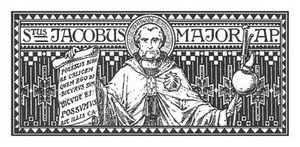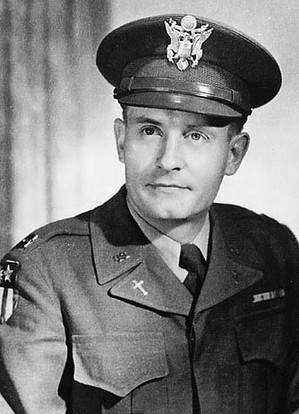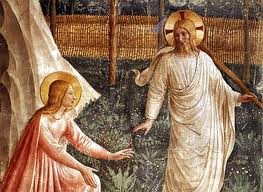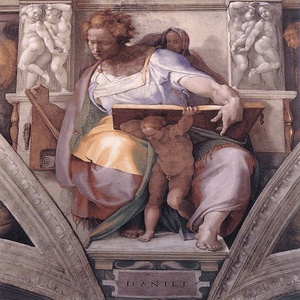 Saint James, the son of Zebedee, and brother of Saint
Saint James, the son of Zebedee, and brother of Saint
John the Apostle, was a Galilean. He was one of the first to be called to the
Apostolate, together with his brother, and, leaving his father and his nets, he
followed the Lord. Jesus called them both Boanerges, that is to say, sons of
thunder. He was one of the three Apostles whom our Savior loved the most, and
whom He chose as witnesses of His Transfiguration, and of the miracle by which
He raised to life the daughter of the ruler of the synagogue, and whom he
wished to be present when He retired to the Mount of Olives to pray to His
Father, before being taken captive by the Jews.
Vatican Nuncio to Ireland recalled
 In an extraordinary act, the Holy See has recalled the papal nuncio, Archbishop Giuseppe Leanza, 68, to Rome to understand the implications of the July 13, 2011 Cloyne Report (421 pages worth) that indicated yet more of the clerical sex abuse.
In an extraordinary act, the Holy See has recalled the papal nuncio, Archbishop Giuseppe Leanza, 68, to Rome to understand the implications of the July 13, 2011 Cloyne Report (421 pages worth) that indicated yet more of the clerical sex abuse.
Monastic Worship Forum launched
Periodically the Benedictine monks, nuns and sisters meet to discuss issues pertaining the sacred Liturgy and sacred music as done in their monasteries. They met two weeks ago at the Archabbey of Saint Meinrad for the meeting and decided to formally merge the liturgical and musicians’ groups into one: The Monastic Worship Forum. This work has been in process since 2009. The purpose of the Forum is to provide support, education, and formation in the sacred Liturgy for monastic contexts in order that God maybe glorified.
Virgilio Cardinal Noè, RIP, former Archpriest of St Peter’s Basilica
One the well-known faces in the Vatican curia died earlier today. Virgilio Cardinal Noè, 89, died in Rome.
Emil Kapaun’s cause for beatification moves to Vatican
The Church in the US could have another saint if US Army chaplain Father Emil Kapaun‘s cause for beatification is accepted by the Congregation for the Causes of Saints.
The work of getting the relevant materials ready has been under the able hands of Father John Hotze, the bishop’s delegate for the study of Father Kapaun’s beatification and canonization. A priest of the Diocese of Wichta since 1940, Father Kapaun served in the US Army from 1944 until his death in 1951. In fact, he died in a prison camp hospital on May 23, 1951 (he was born on April 20, 1916). The Diocese of Wichita has the competence to present the dossier of his life when it officially opened the cause for his beatification on June 29, 2008.
Father Emil Kapaun, a native of Pilsen, Kansas, served in the Korean War as a US Army chaplain, and was known for his selflessness. Kapaun is on record for courageously rescuing wounded soldiers from the battlefield, risking his own life to prevent their execution at the hands of the Chinese. The care of the priest saved the lives of sick and injured soldiers.
The well-known Dr. Andrea Ambrosi, is going to shepherd the Kapaun case. He’ll be the person who will present Kapaun’s case, all 8,268 documents about the chaplain’s deeds and sacrifices in the Korean War, to the Congregation of Saints at the Vatican said based on what he knows thus far, Father Kapaun has a good chance at being beatified. Ambrosi said: “He showed that there was not just a devil working on the battlefields of the war, but something else.” The face of Christ.
Two miracles are being studied.
- In 2006, Avery Gerleman, then 12 years-old, near death for 87 days. She recovered after her parents prayed to Kapaun.
- In October 2008, Chase Kear, a college track athlete, medically inexplicable, he survived a severe pole vaulting accident. His skull was fractured in several crucial places and caused bleeding on his brain. The prognosis was very grim. Family prayed for Father Emil’s intercession.
Saint Mary Magdalen: a witness to the “healing power of Christ’s tender mercy.”
“Everywhere in our culture, people seem so quick to condemn. It is very hard to find words of mercy or understanding for someone who has done something wrong, many good people out there saying things they know they shouldn’t be saying.
People make mistakes. They sin. Some people do evil that causes scandal and grave harm. We can condemn the offense and work for justice — without trying to destroy the person who committed the sin.
We need to reject every temptation to shame or condemn people. Let us never be the cause of turning someone away from seeking God’s forgiveness and redemption.
Let us pray for one another this week, ask the Virgin Mary to ‘give us a faith like Mary Magdalene and hearts to forgive.'”
José H. Gomez, Archbishop of Los Angeles
The Tidings, July 22, 2011
Somalia is the most severe humanitarian emergency in the world
 In his Sunday prayers Pope Benedict appealed on behalf of the victims of the severe drought in the Horn of Africa, particularly Somalia. He asked Christians to show solidarity for the millions that face death by starvation in the worst conditions there in a century. Rain is not expected until October.
In his Sunday prayers Pope Benedict appealed on behalf of the victims of the severe drought in the Horn of Africa, particularly Somalia. He asked Christians to show solidarity for the millions that face death by starvation in the worst conditions there in a century. Rain is not expected until October.Prophet Daniel
Work of Human Hands: A Theological Critique of the Mass of Paul VI: Alcuin Reid reviews
Much has been said about Anthony Cekada’s book Work of Human Hands, some of the critique is lazy, or rigidly steadfast to one’s limp opinion. Nothing is so relevant as information, and nothing so problematic as ignorance (being “untrained”). My hope is that we’d not be too preoccupied by our our thinking; I have confidence that Truth can be revealed in honest thinking and dialogue. The sacred Liturgy, because of its import in our worship of the Triune God, needs to be faithful to Christ and to the Tradition the Church. Cekada’s work is a sizable and it deserves attention. Because of my interest in the sacred Liturgy I am re-posting the book review originally posted on the New Liturgical Movement blog. I am grateful to Dr Alcuin Reid for his tour of the work and the author, and to Shawn Tribe for posting Reid’s review.
Anthony Cekada, Work of Human Hands: A Theological Critique of the Mass of Paul VI, Philothea Press, West Chester, Ohio 2010.
I have long been in Father Cekada’s debt, for it was his booklet The Problems with the Prayers of the Modern Mass that alerted me almost twenty years ago to the significant theological difference between the pre-conciliar and post-conciliar Roman Missals. Work of Human Hands is by no means so succinct a publication. It is a substantial attempt to demonstrate profound theological rupture between the two, and more. It deserves serious attention.
Some will dismiss this study because Father Cekada is canonically irregular and a sede vacantist. Whilst these are more than regrettable, ad hominem realities are not sufficient to dismiss this carefully argued and well researched work. We must attend to his arguments on their merits.
The principal thesis is that “the Mass of Paul VI destroys Catholic doctrine in the minds of the faithful and in particular, Catholic doctrine concerning the Holy Sacrifice of the Mass, the priesthood and the real presence,” and that it “permits or prescribes grave irreverence.” His secondary thesis is that the Mass of Paul VI is invalid. His practical conclusion is that “a Catholic may not merely prefer the old rite to the new; he must also reject the new rite in its entirety. The faith obliges him to do so.” These strong, even extreme, positions may themselves repel readers. But again, they must be examined.





